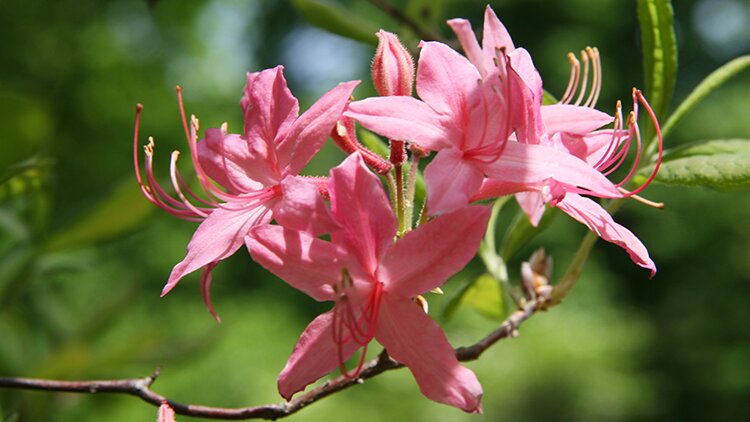Introduction:
In the kaleidoscope of nature’s palette, few flowers rival the breathtaking charm of the red azalea. Bursting forth with vibrant hues and delicate petals, these botanical gems captivate the senses and infuse any landscape with a touch of elegance. This article embarks on a journey to explore the enchanting world of red azaleas, from their origins to cultivation tips, unveiling the secrets behind their timeless allure.
Red Azalea: A Botanical Marvel
In the realm of horticulture, few blossoms command attention quite like the red azalea. With its vivid crimson petals and lush foliage, this flowering shrub stands as a testament to nature’s artistry. Let’s delve into the intricacies of this botanical marvel and uncover the mysteries that lie within its petals.
Origins and Symbolism
The story of the red azalea traces back through centuries of cultural significance and botanical fascination. Originating in Asia, particularly China and Japan, the red azalea holds deep symbolic meaning in various cultures. Revered for its beauty and resilience, it often symbolizes passion, vitality, and rebirth, making it a popular choice for gardens, ceremonies, and floral arrangements.
Cultivation and Care
Cultivating red azaleas requires a delicate balance of nurturing care and understanding of their unique needs. From selecting the ideal location to providing proper soil acidity, each step plays a crucial role in ensuring their health and vitality. Here are some essential tips for cultivating and caring for these exquisite blooms:
Selecting the Perfect Spot: Red azaleas thrive in partially shaded areas with well-drained soil. Choose a location that receives morning sun and afternoon shade to prevent scorching of the delicate petals.
Soil Preparation: Ensure the soil is acidic, with a pH range between 4.5 and 6.0. Incorporate organic matter such as compost or peat moss to improve soil texture and drainage.
Watering and Mulching: Keep the soil consistently moist, especially during the growing season. Apply a layer of organic mulch, such as pine bark or wood chips, to retain moisture and suppress weed growth.
Pruning and Maintenance: Prune red azaleas after flowering to maintain shape and encourage new growth. Remove dead or diseased branches, and fertilize sparingly to avoid excessive foliage at the expense of blooms.
Enhancing Your Garden with Red Azaleas
Beyond their ornamental value, red azaleas serve as focal points in garden landscapes, adding depth, color, and texture to outdoor spaces. Whether planted as standalone specimens or integrated into mixed borders, their vibrant blooms create a visual spectacle that delights the senses year after year.
Red Azalea: A Delight for the Senses
Immerse yourself in the sensory splendor of red azaleas as they unfurl their petals in a symphony of color and fragrance. From their velvety texture to their intoxicating aroma, these captivating flowers offer a multisensory experience that elevates any garden or landscape.
Frequently Asked Questions (FAQs)
1. What is the ideal planting time for red azaleas?
Red azaleas are best planted in the fall or early spring when the weather is mild, allowing them to establish roots before the onset of extreme temperatures.
2. Do red azaleas require special pruning techniques?
While red azaleas benefit from regular pruning to maintain shape and promote flowering, the process is relatively straightforward. Simply trim back branches after flowering to encourage new growth and remove any dead or diseased wood.
3. How often should red azaleas be fertilized?
It’s recommended to fertilize red azaleas once in early spring, just before new growth begins. Use a balanced, slow-release fertilizer specifically formulated for acid-loving plants to support healthy blooms and foliage.
4. Can red azaleas tolerate full sun?
While red azaleas prefer partial shade, they can tolerate some morning sun if provided with adequate moisture and protection from intense afternoon heat.
5. Are red azaleas prone to any pests or diseases?
Red azaleas may be susceptible to pests such as lace bugs, aphids, and spider mites, as well as diseases like powdery mildew and root rot. Regular inspection and proper cultural practices can help prevent and manage these issues.
6. How long do red azaleas typically bloom?
The blooming period of red azaleas varies depending on the cultivar and growing conditions but generally lasts for several weeks in spring, creating a spectacular display of color.
Conclusion:
In the tapestry of nature’s wonders, the red azalea stands as a radiant testament to beauty, resilience, and botanical brilliance. From its origins steeped in symbolism to its cultivation in gardens worldwide, this captivating flower continues to enchant and inspire generations of admirers. As you embark on your journey into the world of gardening, consider adding the timeless elegance of red azaleas to your outdoor oasis. And let their vibrant blooms paint a masterpiece of color and charm.


